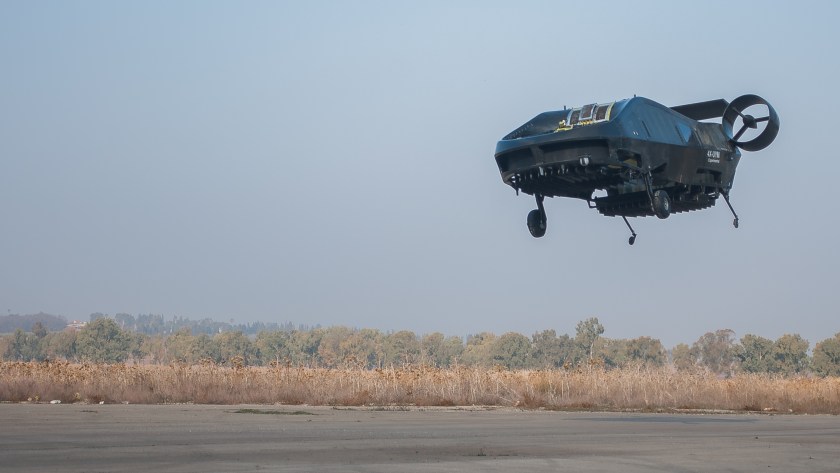
Could this be the future of air transport? The Cormorant, an unmanned aerial vehicle from Urban Aeronautics may defy categorization, but it certainly doesn’t defy reality.
A cross between all things insect and mechanical, the single-engine aircraft may look like something out of a sci-fi movie, but its potential applications for emergency response and commerce are anything but fiction. With a max altitude and speed of 18,000 feet and 110 mph, respectively, the Cormorant could whisk packages or patients to their desired destination with ease, taking off and landing vertically like a helicopter.

Urban Aeronautics, an Israeli-based company that specializes in vertical takeoff and landing vehicles, is billing the aircraft for military purposes since that’s where they believe it’s greatest potential lies—particularly with rescue and resupply operations behind enemy lines. In fact, the concept for the Cormorant was inspired by the need for such a vehicle—one that operates in complex urban environments and natural ones, too—recognized by military officials during the Israel-Lebanon conflict in 2006.
Depending on the mission, the Cormorant can be customized to best suit its needs. For tactical missions, the standard model comes with radar-subverting tech, and a high-speed variant is available as well. The unmanned aircraft can make light work of search-and-rescue missions by using its remotely controlled robotic arms. With a max payload of a 1,000 pounds and a range of 30 miles, about 10–12 Cormorants could sustain a battalion of 3,000 soldiers in the field (all that, while still removing wounded soldiers from the battlefield). Faring better than helicopters in rough weather, the aircraft can hover in the midst of 50-knot wind gusts, so it’s not hard to imagine the Coast Guard using it as well.
While the absence of a pilot does not remove risk from each flight, it still greatly reduces it. Having an unmanned aircraft that takes off and lands like a helicopter is so appealing to the military community, various vehicles like the Cormorant have entered the prototype phase in recent years. Alas, the offering from Urban Aeronautics is the only one to receive an endorsement from NATO and the IDF.
Last month, the Cormorant had its first full flight on a pre-planned route, a milestone for any aircraft with a pilot-in-training (or computer in this case). The Cormorant had its first test flight in December 2015, when it was called the “Air Mule,” but that was much more simple than November’s full flight. Completed without any hiccups, the low flight lasted around two minutes over uneven terrain.
While that may not seem like a showstopper, it’s a major proof of concept to potential customers. The uneven terrain can throw off the Cormorant’s autopilot since it relies on inertia and ground level reference. Urban Aeronautics currently does not have any contracts to produce the Cormorant, but it would be surprising if it didn’t in the near future. Watch the test flight below.
This article was featured in the InsideHook newsletter. Sign up now.






















